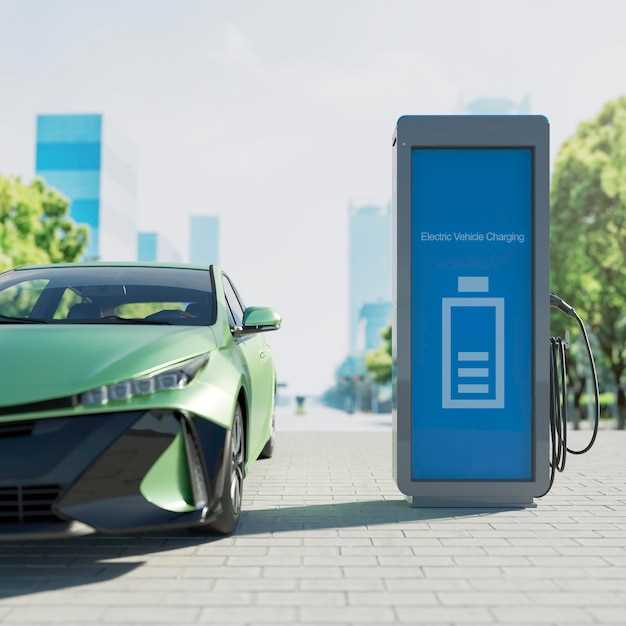
As the demand for sustainable transportation options continues to grow, the market for electric commercial vans is experiencing substantial growth. Businesses are increasingly recognizing the benefits of adopting EVs not only for their environmental impact but also for their potential to reduce operating costs. These vehicles are designed to provide reliable performance while minimizing carbon emissions, making them an appealing choice for companies aiming to improve their green credentials.
Today, a variety of electric commercial vans are available, catering to different business needs and budgets. From last-mile delivery services to larger fleet operations, manufacturers are stepping up to offer versatile models equipped with advanced technology. The range of options includes well-known automotive brands and innovative startups, marking a significant shift in the vehicle landscape towards electrification.
The current market features several models, equipped with varying levels of range, payload capacity, and charging capabilities. This diversity allows businesses to select the most suitable vehicle for their specific operational requirements. With the infrastructure for electric charging also improving, the transition to using electric vans is becoming increasingly practical and efficient for commercial operations.
Key Features to Compare in Electric Vans for Businesses

When evaluating electric commercial vans, businesses must consider several crucial features to ensure they select a model that meets their operational needs efficiently. Here are the primary aspects to examine:
1. Range: The driving range on a single charge is a vital factor for any business relying on electric vans. Depending on the nature of the operations, companies should choose vans that offer sufficient mileage to complete daily routes without frequent recharging.
2. Payload Capacity: For commercial use, understanding the payload capacity is essential. This includes not only the weight the van can carry but also how it impacts range and performance. Businesses must ensure that the chosen vehicle can transport their products or equipment without compromising efficiency.
3. Charging Infrastructure: Assessing the available charging options is critical. This includes the convenience of charging stations, the speed of charging (level 1 vs. level 2 charging), and whether the organization can install dedicated charging solutions at their facilities.
4. Total Cost of Ownership: When comparing electric vans, it’s important to analyze the total cost of ownership (TCO). This includes purchase price, maintenance costs, energy costs, and potential savings from tax incentives and rebates. Understanding TCO provides a clearer picture of long-term financial viability.
5. Cargo Space and Flexibility: The design and layout of the cargo area can significantly influence operational efficiency. Factors such as ease of access, shelving options, and customizable configurations should be taken into consideration to optimize loading and unloading processes.
6. Technology and Features: Modern electric commercial vans often come equipped with advanced technology. Features such as telematics, driver assistance systems, and connectivity options can enhance safety, improve route efficiency, and simplify fleet management.
7. Warranty and Support: The warranty coverage on electric vans can vary greatly among manufacturers. Businesses should consider warranty terms on the battery and vehicle components, as well as the availability of customer support services to address potential issues promptly.
8. Environmental Impact: Many businesses are increasingly focused on sustainability. Evaluating the emissions, recyclability of materials, and overall environmental footprint of their electric vans can align with corporate social responsibility goals.
By carefully comparing these features, businesses can make informed decisions when selecting electric commercial vans that will best support their needs and objectives.
Market Leaders in Electric Commercial Vehicles and Their Offerings
As the demand for sustainable transportation grows, several manufacturers have emerged as leaders in the electric commercial vehicle (EV) market. These companies are not only developing efficient solutions but are also adapting their offerings to meet the diverse needs of businesses.
Tesla, an innovator in electric technology, offers the Tesla Model X and the forthcoming Tesla Cybertruck as options for commercial applications. Their electric vans are gaining attention for their impressive range, advanced technology, and performance capabilities, which are particularly appealing for urban delivery services.
The Ford E-Transit is another significant player, tailored specifically for commercial use. With a spacious cargo area and various configurations, the E-Transit provides businesses with practical capabilities while offering zero-emission driving. Its integration with Ford’s fleet management tools makes it an attractive choice for companies seeking efficiency.
Rivian, known for its electric adventure vehicles, is expanding into the commercial sector with the R1T and R1S models. Their emphasis on durability and utility provides a unique edge, catering specifically to businesses focused on delivering robust performance in challenging environments.
Mercedes-Benz is stepping into the electric commercial vehicle market with the eSprinter. Designed for last-mile delivery solutions, the eSprinter combines brand reliability with a fully electric powertrain, ensuring businesses can operate sustainably without compromising on performance.
Lastly, Arrival is generating buzz with their urban delivery van, which features modular designs and is built using lightweight materials to enhance efficiency. Arrival’s approach focuses on adapting to the specific needs of delivery services, further driving down operational costs for businesses.
In summary, market leaders in electric commercial vehicles are setting the benchmark for innovation and sustainability. Their diverse offerings encompass a range of needs, providing businesses with electric solutions that are both practical and environmentally friendly.
Cost Analysis: Purchase vs. Leasing for Electric Vans

When considering electric commercial vans (EVs), businesses face a critical decision: whether to purchase or lease these vehicles. Both options come with distinct financial implications that can significantly affect a company’s bottom line.
Purchase: Buying an electric van typically requires a larger upfront investment. This includes not just the vehicle cost, but also potential expenses for installation of charging infrastructure. However, ownership offers long-term benefits, such as no monthly lease payments and the potential for claiming tax incentives or rebates. Companies may also gain increased asset value as they can resale the van later, albeit at depreciated rates. Furthermore, with rising fuel costs and lower maintenance for electric vehicles, long-term ownership can lead to reduced operational costs.
Leasing: On the other hand, leasing electric vans provides flexibility and lower initial payments. Monthly lease terms are generally cheaper compared to loan payments for purchasing, making it easier for businesses to maintain cash flow. Leasing also allows companies to stay updated with the latest EV technology without committing to long-term ownership. Additionally, maintenance costs can often be included in lease agreements, further simplifying budget management. However, at the end of the lease, there is no asset to show for the payments made, which can be viewed as a disadvantage for companies that prefer to own their vehicles outright.
Ultimately, the choice between purchasing and leasing electric commercial vans should align with the company’s financial strategy and operational needs. A thorough cost-benefit analysis, factoring in both immediate and long-term expenses, will guide businesses in making the most advantageous decision for their fleet management.




